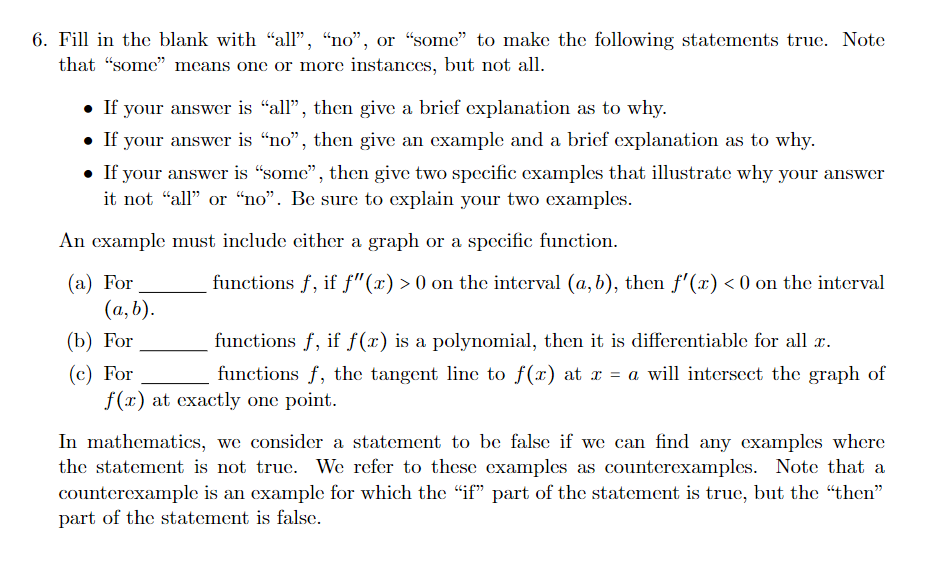6. Fill in the blank with “all", “no", or “some" to make the following statements truc. Note that "some" mcans one or more instances, but not all. • If your answer is “all", then give a bricf explanation as to why. If your answer is “no", then give an example and a brief explanation as to why. • If your answer is “some", then give two specific examples that illustrate why your answer it not "all" or “no". Be sure to explain your two examples. An example must include either a graph or a specific function. (a) For (a, b). functions f, if f"(x) > 0 on the interval (a, b), then f'(x) < 0 on the interval (b) For functions f, if f(x) is a polynomial, then it is differentiable for all x. (c) For f(x) at exactly one point. functions f, the tangent line to f(x) at r = a will intersect the graph of In mathematics, we consider a statement to be false if we can find any examples where the statement is not true. We refer to these examples as counterexamples. Note that a counterexample is an example for which the “if" part of the statement is true, but the “then" part of the statement is false.
Fill in the blank with “all”, “no”, or “some” to make the following statements true. Note
that “some” means one or more instances, but not all.
•If your answer is “all”, then give a brief explanation as to why.
•If your answer is “no”, then give an example and a brief explanation as to why.
•If your answer is “some”, then give two specific examples that illustrate why your answer
it not “all” or “no”. Be sure to explain your two examples.
An example must include either a graph or a specific function.
(a) For functions f , if f ′′(x) > 0 on the interval (a, b), then f ′(x) < 0 on the interval
(a, b).
(b) For functions f , if f (x) is a polynomial, then it is differentiable for all x.
(c) For functions f , the tangent line to f (x) at x = a will intersect the graph of
f (x) at exactly one point.
In mathematics, we consider a statement to be false if we can find any examples where
the statement is not true. We refer to these examples as counterexamples. Note that a
counterexample is an example for which the “if” part of the statement is true, but the “then”
part of the statement is false.

Trending now
This is a popular solution!
Step by step
Solved in 4 steps with 4 images


